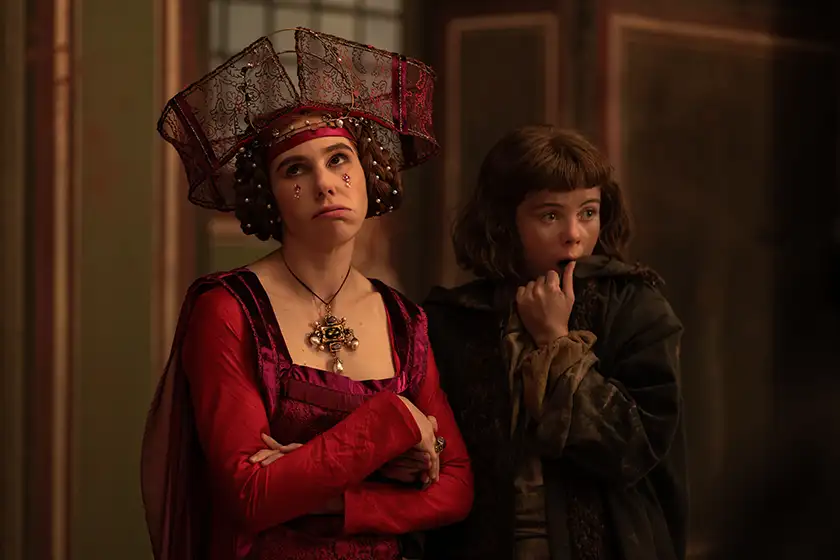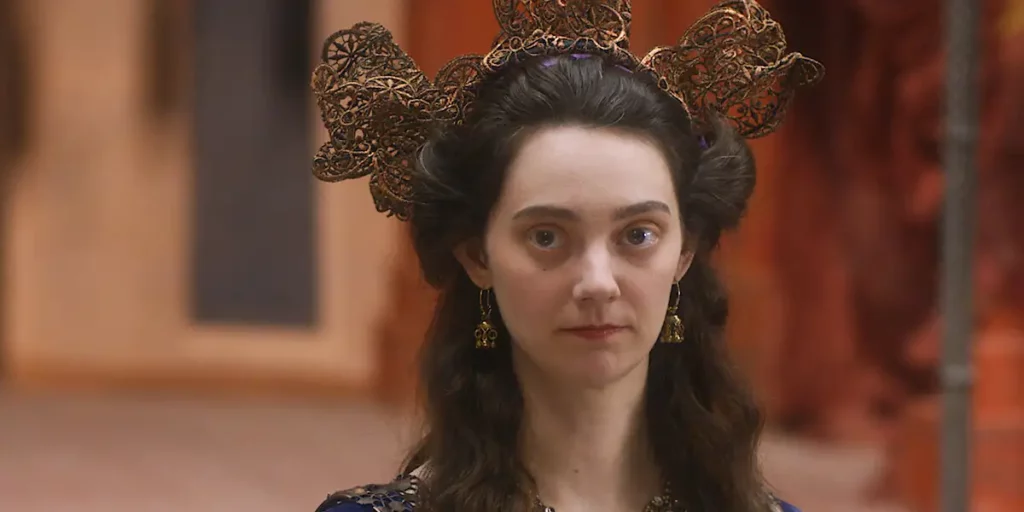While Netflix’s The Decameron takes us back in time in setting, it also maintains modern themes of inequality during a global pandemic.
Showrunner: Kathleen Jordan
Genre: Comedy, Drama, History, Adaptation
Number of Episodes: 8
Global Release: July 25, 2024
Where to watch: Netflix
“We can drink wine and we can tell stories,” says one of the characters of The Decameron towards the end of the season. At its core, this is what the show seems to stand for: a mix of stories, wit, wine, and eroticism. In Netflix’s newest show, Bridgerton meets Saltburn in a unique and new product that remains fresh and modern despite its setting.
The Decameron starts in 1348 in Florence. The city is destroyed by the Black Death, which has collected an extensive death toll across all the major cities in Italy. In order to escape both Florence and certain death from the plague, a few nobles and their servants are invited to go to the Tuscan countryside in Villa Santa, which becomes the setting for the entire show. Amongst them, we find Pampinea (Zosia Mamet, of Molli and Max in the Future), a frivolous woman who is desperate to get married, and her loyal servant Misia (Saoirse-Monica Jackson, of Derry Girls), as well as the married couple made up of Panfilo (Karan Gill) and his wife, the overly piteous Neifile (Lou Gala). At the Villa, they are also joined by Filomena (Jessica Plummer) and her servant Licisca (Tanya Reynolds, of Sex Education).
From the very first scene, The Decameron shows us that this is a show where tragedy and comedy can truly meet. The series especially excels at mixing the two together, with a tone that easily jumps from emotional and touching to satirical and humorous and vice versa in the same scene. A lot of this is undeniably due to the talented actors, who are all very impressive playing layered characters who grow throughout the show. Both Tanya Reynolds and Jessica Plummer shine in their portrayal of Licisca and Filomena, as well as the complex and changing relationship between the two.
While a lot of The Decameron focuses on the relationships that form between these characters once they reach the villa, one of the most interesting themes that the Netflix show explores is the unequal dynamic between masters and servants. This is true for Licisca and Filomena, who will come to understand each other’s struggles more than they could ever imagine, but also for other pairings we may not have expected to see at the beginning of the series. The power struggle between the two groups is evident: on one hand, the servants need to rely on their masters for their livelihood but, on the other, it becomes increasingly clear that the upper class could not survive without the constant help of those who work for them.

At its core, The Decameron explores themes of inequality and class struggle. Even during such a big and widespread pandemic as the Black Death in the 1300s, there seems to be little hope for equality as the richest characters are portrayed as the ones with every advantage: for example, they can attempt to escape the pestilence by travelling to a villa in the countryside rather than remaining in Florence. Or are they at an advantage? The Netflix show’s ending does not necessarily point in that direction. Matters of class struggle and the power struggle for the ownership of the villa continuously drive the tension and stakes of every episode of the series.
Culturally, The Decameron portrays its 14th-century setting perfectly. Firstly, the show does a good job at constantly reminding its characters, and therefore its audience, of the ever-present threat of the Black Death, something that the viewers can probably easily relate to as the memory of a pandemic is something that many of us have from recent years. The cultural scenario is also shown through other small details, from the use of Italian titles for the noblemen and noblewomen to the costumes that drastically change depending on whether the character is a highborn person or not.
Naturally, a lot of it goes back to the source material. The Decameron is loosely adapted from a collection of short stories of the same name by Giovanni Boccaccio. The entire tone of the series – made up of comedic sexual innuendoes, reflections on the current state of the world, and desire for escapism – and its setting in the Tuscan countryside in the 14th century come from the source material. However, the Netflix show is very loosely based on Bocaccio’s work and leaves behind one of the most iconic and well-known aspects of the book: the stories themselves.
In the original Decameron, seven young women and three young men escape to the countryside to avoid the pestilence and decide to tell each other stories of tragedy, eroticism, wit, and jokes. The Decameron, instead, focuses solely on this frame narrative that is not so prevalent in Boccaccio. Despite only suggesting the storytelling elements in some sequences, some of the stories from the source material are clearly incorporated into the plot of the show in other ways. While this may seem disappointing at first for those who are familiar with the original book, it does end up working, as it gives us more time to become familiar with the characters and their backstories.
However, this structure ends up becoming a little too repetitive halfway through the show. The Decameron relies on a very specific setting and canon of main characters with very clearly established personalities, which leaves little space for the introduction of new elements into its plot and narrative structure. While new people are introduced in the series, they always feel like temporary side characters who are not thoroughly explored in the show. This also means that most of the twists and revelations become too predictable, leaving little space for any surprise or shock, as the audience comes to know these characters very well during the first few episodes.
The relationships between the characters also seem set from very early on, but the show could have benefitted from showing a broader range of interactions between its main cast. At the same time, The Decameron could have explored certain themes more. For example, there could have been an interesting commentary on the role of women in society at the time given that a lot of the plot of the show revolves around marriage, especially for Pampinea’s character who seems to attach her self-worth to finding a husband and her dowry itself. In this sense, I wish that the Netflix series would have done more with such a fascinating topic that is only left to the side and barely touched upon.
Overall, The Decameron is a fascinating take on a book that has now become a classic of Italian literature. While it may not be incredibly accurate to the source material, the show is able to maintain its most important elements in terms of tone, setting, and topics which also feel incredibly relevant to today’s political scenario, despite it being set in the 1300s.
The Decameron is now available to watch globally on Netflix. Read our review of Bridgerton Season 3 and find out what to expect from season 4 of Bridgerton!

